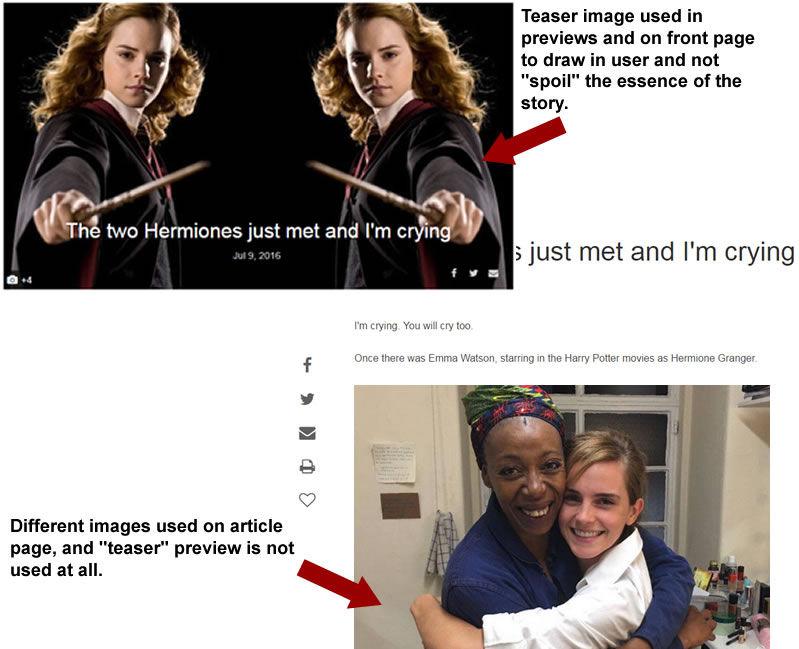
Why is it a 'teaser' image on articles and a 'preview' image on HTML assets or galleries?
Like the addition of the "teaser" image on article files, but for purposes of training staff and passing meta data on, shouldn't they be consistently named "preview" instead of "teaser?" - or are they serving different functions?
Answer

They are essentially the same thing. But to break it down (as I understand it), it's something like this;
Teaser: What image that will show on the front-end of your site when listing the article it's attached to. Will show an image on the front-end if there is no image attached to the article, or if there is a completely different one.
Preview: How the image will show on the front-end of your site. Should be the same image as what was uploaded, but could be better cropped for front-end viewing. (e.g. If it's a portrait of a person, could be cropped so their head is visible on the front-end and not something else when automatically cropped, such as their chest.)

Thanks Robert and Bob! Yes, Robert's description was accurate. I'll give you two use cases for the Teaser that will illustrate it's purpose:
1. Using a teaser image so that you don't "give away" the mystery of the story or the main story photo. For example, an article like, "The two Hermiones just met and I'm crying" would show and example of two Hermiones from the movie, which would work to draw the user in to find more information. The teaser image does not show on the article though.
On the article itself, the main photo (which is the revealing photo that users clicked through to see) can now be shown. This just a child asset which would show as usual. See this example:

2. The second case where this may be useful is where a media organization has a goal or mandate to have more photos on more articles. They may want to add "stock" images - such as some crime tape to go with a crime story -but because it isn't actually a picture of something important, they don't actually want it to show on the article page itself. That way, you can have a teaser thumbnail, but you don't have to have it on the article page.
Customer support service by UserEcho


Thanks Robert and Bob! Yes, Robert's description was accurate. I'll give you two use cases for the Teaser that will illustrate it's purpose:
1. Using a teaser image so that you don't "give away" the mystery of the story or the main story photo. For example, an article like, "The two Hermiones just met and I'm crying" would show and example of two Hermiones from the movie, which would work to draw the user in to find more information. The teaser image does not show on the article though.
On the article itself, the main photo (which is the revealing photo that users clicked through to see) can now be shown. This just a child asset which would show as usual. See this example:
2. The second case where this may be useful is where a media organization has a goal or mandate to have more photos on more articles. They may want to add "stock" images - such as some crime tape to go with a crime story -but because it isn't actually a picture of something important, they don't actually want it to show on the article page itself. That way, you can have a teaser thumbnail, but you don't have to have it on the article page.